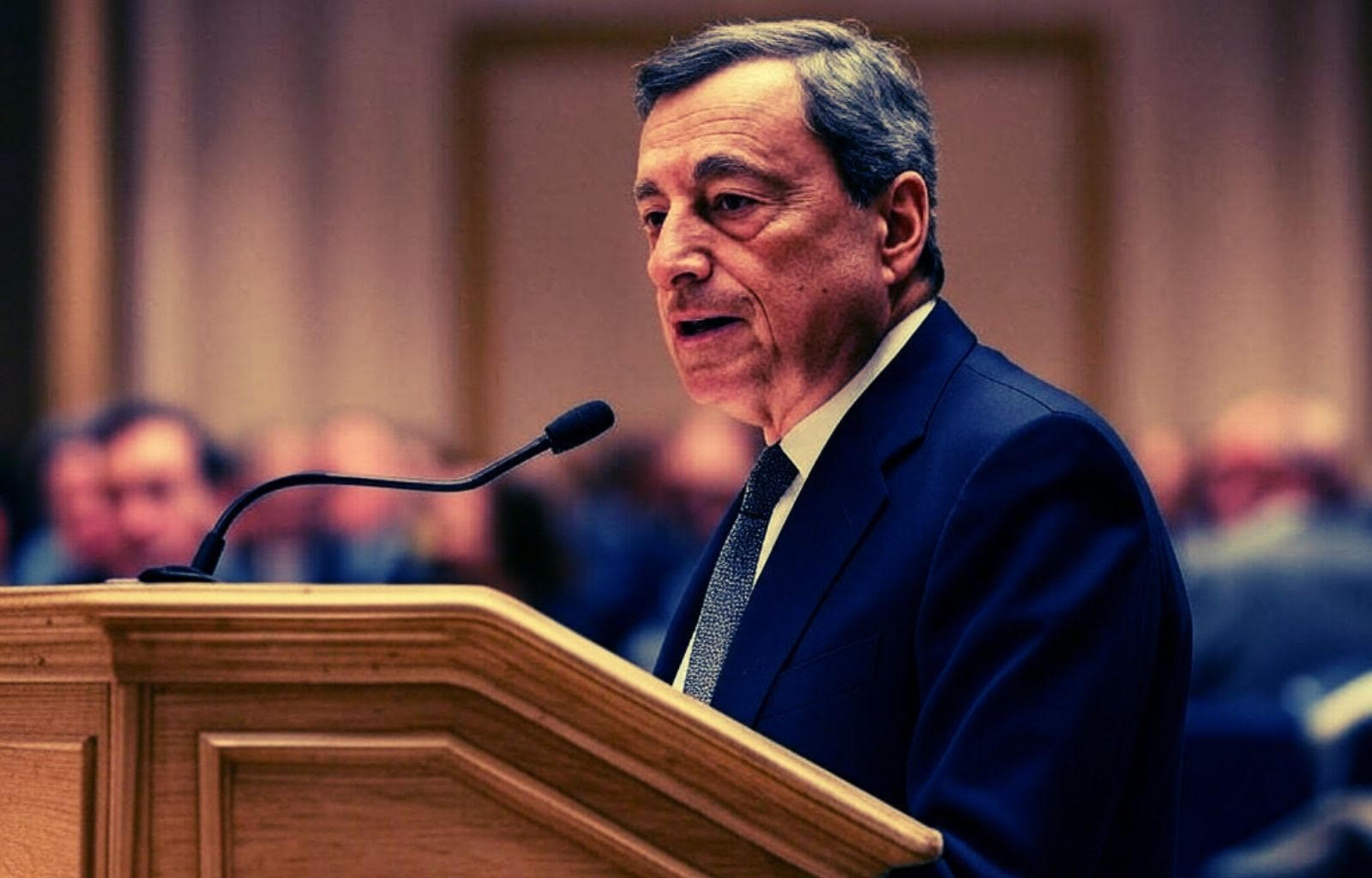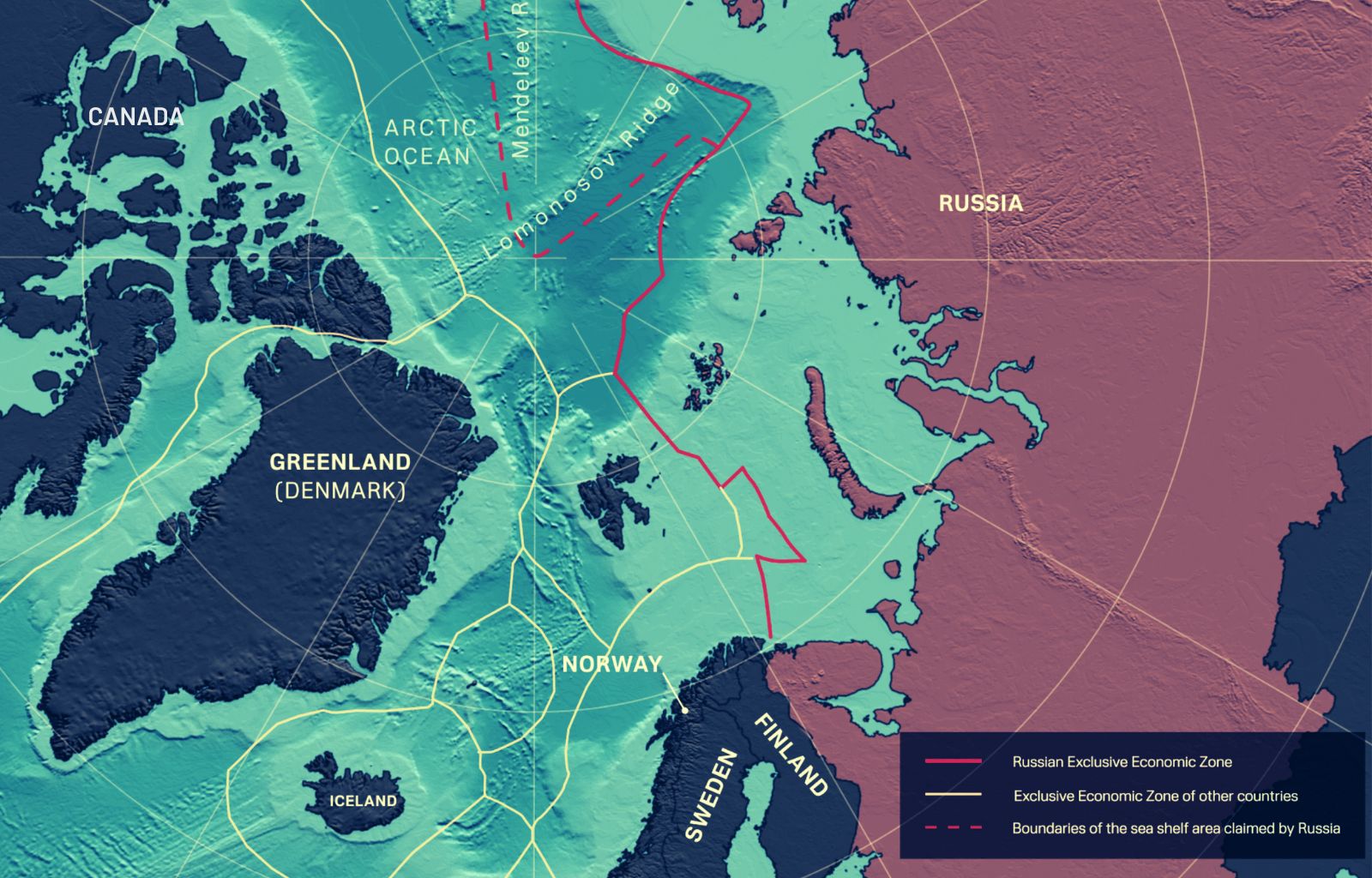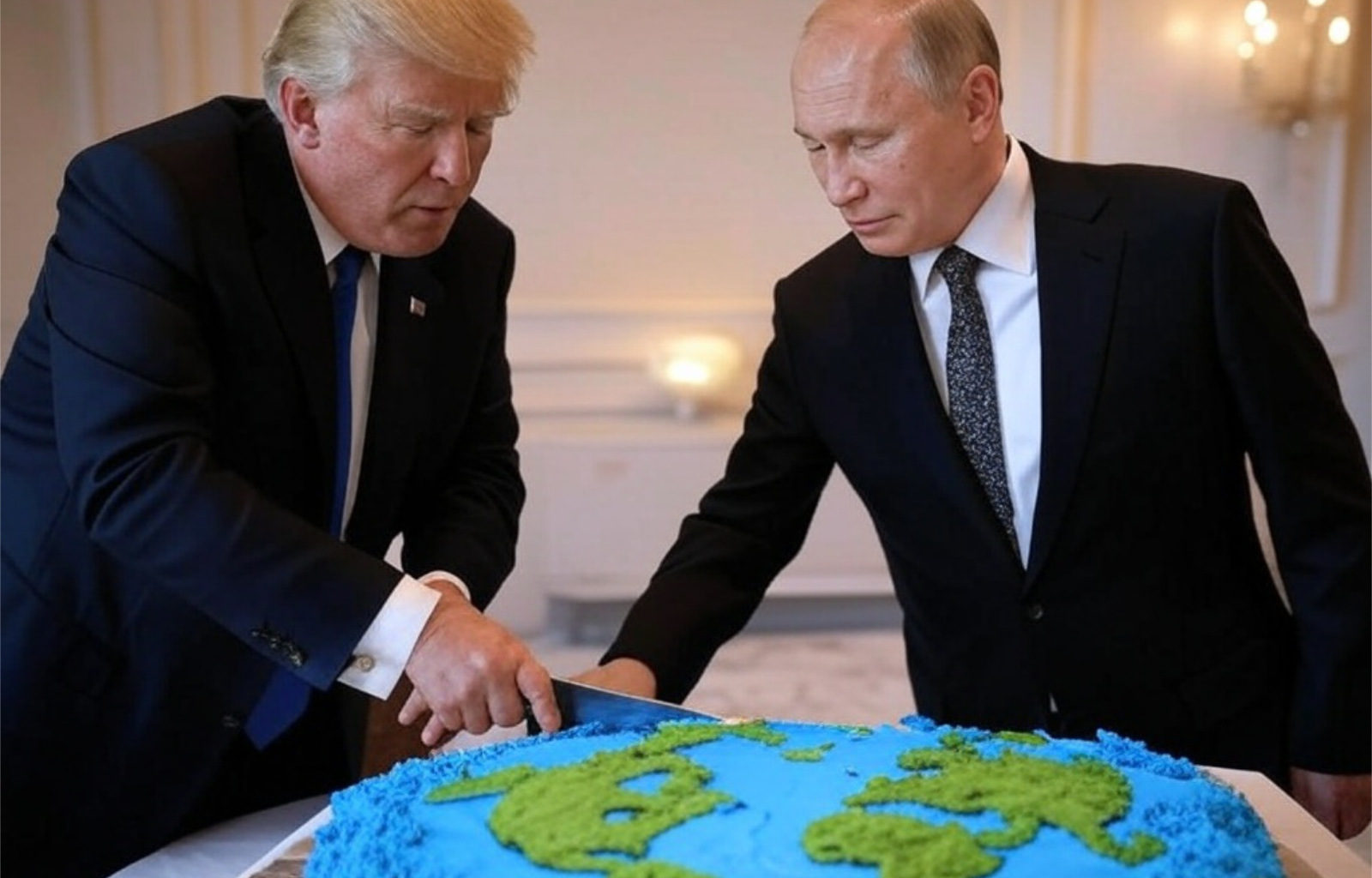Mario Draghi’s words to the Italian Parliament

When he speaks, Mario Draghi is never banal; many times he shows the way, others he is an unheard prophet, certainly never insignificant.
That is why his speech today at the Budget, Productive Activities and EU Policies Committees of the House and Senate deserves to be disclosed and known in full, and we at L’Europeista publish it for you.
It is a great pleasure to have the opportunity to discuss with you the contents of the Future of European Competitiveness Report. I thank the Presidents for the invitation. And I thank all of you for your interest and for the contributions that I am sure will enrich a debate that I believe is decisive for the future of Italian and European citizens. Incidentally, this is the first time I have returned to Parliament since the end of my term as Prime Minister. I do so with some emotion and with much gratitude for what this institution has been able to do in very complicated years for the country, and for what it is still doing.
When I was asked by the President of the European Commission, Ursula von der Leyen, to write a Competitiveness Report, the Union’s backwardness was already worrying. The European Union has for decades guaranteed its citizens peace, prosperity, solidarity and, together with its American ally, security, sovereignty and independence. These are the constituent values of our European society. These values are being called into question today.
Our prosperity, already threatened by low growth for many years, was based on an order of international relations and trade that has now been disrupted by the protectionist policies of our largest partner. The duties, tariffs and other trade policies that have been announced will have a strong impact on Italian and European companies.
Our security is now called into question by the change in the foreign policy of our major ally in relation to Russia, which, with its invasion of Ukraine, has proven to be a real threat to the European Union. Europe is now more alone in international fora, as was recently the case at the United Nations, and wonders who will defend its borders in the event of external aggression. And with what means.
Europe would still have had to fight the stagnation of its economy and take more responsibility for its own defence in the face of a long-announced reduced American commitment. But the directions of the new Trump administration have dramatically reduced the time available. We hope they will push us with equal energy to tackle the political and institutional complexities that have so far delayed our action.
The figure that best sums up the persistent weakness of our continent’s economy is the amount of savings that leaks out of the European Union every year: EUR 500 billion in 2024 alone: savings for which the European economy cannot offer an adequate rate of return. The Report extensively analyses the structural causes of this inadequacy. Today I want to focus on three aspects, which have become even more urgent in the six months since its publication. These are the cost of energy, regulation, and innovation policy.
In Europe, between September and February, the wholesale price of natural gas increased on average by more than 40 per cent, with peaks of more than 65 per cent, before settling at +15 per cent in the last week. Wholesaleelectricity prices have also risen across the board in different European countries, and are still 2-3 times higher than prices in the US. This problem is even more pronounced in Italy, where wholesale electricity prices in 2024 were on average 87% higher than in France, 70% higher than in Spain, and 38% higher than in Germany. Wholesale gas prices in Italy in 2024 were also on average higher than in European markets.
Final prices to consumers are also affected by taxation, which in Italy is among the highest in Europe.
In the first half of 2024, Italy had the second highest level of taxation and stranded charges for non-domestic electricity consumers in Europe. Such high energy costs put companies – European and Italian in particular – at a permanent disadvantage against foreign competitors. Not only the survival of some traditional sectors of the economy is at risk, but also the development of new high-growth technologies. One thinks, for example, of the high consumption required for data centres. A serious policy to boost European competitiveness must set as its first objective the reduction of bills, for companies and households.
At the European level, we need to exercise our buying power in the natural gas market, exploiting our position as the world’s largest gas consumer. We can better coordinate the demand for gas between countries, e.g. by flexibly filling storages, in order to avoid a tightening of the overall demand. Furthermore, it is necessary to demand more transparency in the markets. It is essential to avoid concentration risks and to strengthen the level of supervision. A large part of gas-related financial transactions is concentrated in a few financial companies without any form of supervision over them comparable to that over other financial intermediaries. In line with the Report’s recommendations, the Commission (with the Clean Industrial Deal and the launch of the Gas Market Task Force) has made substantial proposals to strengthen the supervision and regulation of energy and financial markets.
The Commission’s action in this area must be supported, and rapid implementation of measures is essential.
More transparency on purchase prices at source is also needed for gas. The benefit of the lower operating costs of renewables will only fully reach end users in many years’ time. Citizens are telling us that they are tired of waiting. Decarbonisation itself is at risk. Wholesale electricity prices depend on the generation mix but also on how the price is formed. In Europe, in 2022, although gas accounts for only 20% of the electricity generation mix, it determined the overall electricity price more than 60% of the time. In Italy, about 90% of the time.
We certainly need to accelerate the development of clean generation and invest extensively in flexibility and networks. But we also need to decouple the price of energy from renewables and nuclear power from that of fossil energy. However, we cannot just wait for reforms at European level. In Italy, there are dozens of gigawatts of renewable plants awaiting authorisation or contractualisation. It is imperative to simplify and accelerate authorisation processes, and to quickly launch development tools. This would enable new production at lower costs than gas-fired generation, which still accounts for about 50 per cent of the electricity mix in Italy (compared to less than 15 per cent in Spain and less than 10 per cent in France). Furthermore, without waiting for a European reform, we can untie renewable remuneration from gas remuneration, both on new and existing plants, by adopting Contracts for Difference (CfD) more widely and encouraging and promoting Power Purchasing Agreements (PPAs).
The regulation produced by the European Union over the last 25 years has certainly protected its citizens, but it has expanded by chasing the growth of new sectors, such as digital, and continuing to increase regulation in others. There are 100 laws focused on the high-tech sector and 200 different regulators in the Member States. This is not proposing unbridled deregulation but just a little less confusion.
The rules – too many and too fragmented – penalise, especially in the service sector, individual initiative, discourage the development of innovation, and penalise the growth of the economy.
When new rules are introduced, Member States often neglect to adapt national regulations and where Commission directives provide for minimumharmonisation , they add to them other national requirements that differ between countries. Finally, the defence of the single market before the European Court of Justice has become increasingly rare. A recent study by the International Monetary Fund showed how over-regulation and especially its fragmentation has contributed to internal barriers to the single market amounting to a 45% duty on manufactured goods and 110% on services. So we cannot be surprised if our brightest inventors choose to bring their companies to America, and if Europeans follow them with their savings.
With regard to regulatory and administrative simplification, in line with the recommendations of the Report, the Commission recently presented proposals for sustainability reporting requirements, from which companies with less than 1,000 employees will be exempt. This is only a first step in the right direction. On the part of the Member States, there is no evidence of any initiative for further simplification.
The Report extensively examines the entire innovation cycle from research to commercialisation and makes numerous proposals on what Europe and individual Member States can do to narrow the gap with the US and China and enable the most innovative companies to develop in Europe instead of moving to the US. Since its publication, the European lag has become even more pronounced. Artificial intelligence models have become increasingly efficient, with training costs falling tenfold since the report came out.
According to recent developments, Artificial Intelligence models are increasingly approaching – or even exceeding – the capabilities of PhD researchers. Autonomous agents are on their way to being able to make decisions operating in complete autonomy. In Europe, we continue to lose ground on this front: eight of the ten largest Large Language Models (LLM) are developed in the US and the remaining two in China. In this area, the Report notes that the European gap is probably unbridgeable but suggests that industry, services and infrastructure develop theuse of AI in their respective sectors. Urgency is essential because LLM is also expanding vertically.
Lack of funding is often cited as an important cause for the weakness of the innovation cycle in Europe. The Report proposes a somewhat different interpretation. Usually, an innovative project becomes financially attractive when its scale can grow beyond national borders. But this is difficult in Europe because the market for services is very fragmented. Here, therefore, the overseas investor offers the innovative project not only financing but also access to the American market. The creation of a true single European services market for 450 million people is therefore the real prerequisite for the start of a large and vital innovation cycle. A capital market capable of directing savings towards the most dynamic start-ups will provide the necessary funding.
In line with the Report, the Commission announced its proposal for a 28th legal regime for innovative companies that will be subject to the same company, bankruptcy, labour and tax law rules in all 27 EU states. This is also a proposal that deserves strong support.
The Report in its third part addresses the major vulnerabilities to which the European Union is exposed and, among them, defence.
From anindustrial and organisational point of view, this means fostering European industrial synergies by concentrating developments oncommon military platforms (aircraft, ships, land vehicles, satellites) that enable interoperability and reduce the current dispersion and overlapping in the production of member states.
In recent weeks, the Commission has kicked off a massive European defence investment plan. While new resources are being planned, thecurrent European defenceprocurement – amounting to around EUR 110 billion in 2023 – should be concentrated on a few advanced platforms instead of on numerous national platforms, none of which are truly competitive because they are essentially dedicated to domestic markets.
The effect of the fractioning is deleterious: in the face of still high overall investments, European countries eventually buy most of their military platforms from the United States. Between 2020 and 2024, the US supplied 65% of the defence system imports of European NATO member states. In the same period, Italy imported about 30% of its defence equipment from the US. If Europe decided to create its own defence and increase its investments by overcoming the current fractioning, instead of relying so heavily on imports, it would certainly have a greater industrial return, as well as a more balanced relationship with its Atlantic ally also on the economic front.
This major transformation is in fact necessary not only because of thegeopolitical complexities we are witnessing, but also because of the very rapid evolution of technology that has overturned the concept of defence and warfare. If we take drones as an example, an estimate by the Ukrainian armed forces reveals that since the beginning of the conflict, around 65% of the targets hit have been from unmanned aircraft. Not only drones, but also artificial intelligence, data, electronic warfare, space and satellites, and silent cyber warfare have taken on a very important role on and off the battlefield. Defence today is no longer just about weaponry but also about digital technology. It is the very concept of defence evolving into the broader concept of global security. The convergence of military and digital technologies leads to the synergy of the different defence systems of air, sea, land and space. There is therefore a need for a unified continental strategy for cloud, supercomputing and artificial intelligence, cyber security.
This development can only take place on a European scale. The common defence of Europe therefore becomes a compulsory step to make the best use of the technologies that will have to guarantee our security. Even our assessment of defence investment, today based on military spending alone, will have to be modified to include the investments in digital, space and cybersecurity that are becoming necessary for the defence of the future. For all that, we need to start on a path that will take us beyond national models and think on a continental level. This concerns not only our security but also Europe’s presence among the great powers.
The decisions to which the Report calls Europe are even more urgent today when the need to defend itself and to do so soon is at the centre of the attention and concerns of the majority of European citizens. A Europe that grows will more easily finance a financing need that now exceeds the Report’s forecasts. A Europe that reforms its services and capital markets will see the private sector participate in this financing.
But state intervention will remain necessary.
The narrow budget spaces will not allow some countries significant deficit expansions, nor are contractions in social and health spending conceivable: this would not only be a political mistake, but above all a denial of that solidarity that is part of the European identity, the identity we want to protect by defending ourselves against the threat of autocracy.
Recourse to common debt is the only way.
To implement many of the proposals in the report, Europe will therefore have to act as one. This may mean either greater centralisation of decisions and spending capacities, or faster and more effective coordination between countries that, sharing the basic guidelines, will be able to reach the compromises necessary for a common path.
At all times in this process, national parliaments and the European Parliament will play an essential role.
The choices before us are of great moment, as perhaps never since the founding of the European Union.
Politics – and in particular the domestic policy of each Member State – will be at the heart of this.
You parliamentarians will be protagonists by responding with your decisions to the aspirations, but also the concerns, of the citizens.
But only in this way will we build a strong and cohesive Europe because each of its states is only strong if it is together with others. And only if it is internally cohesive.
Thank you.











